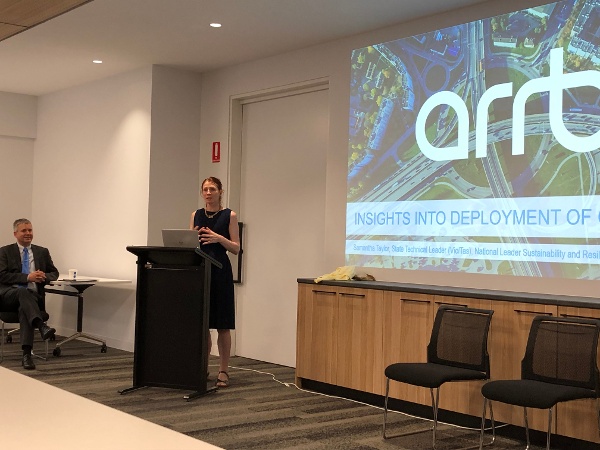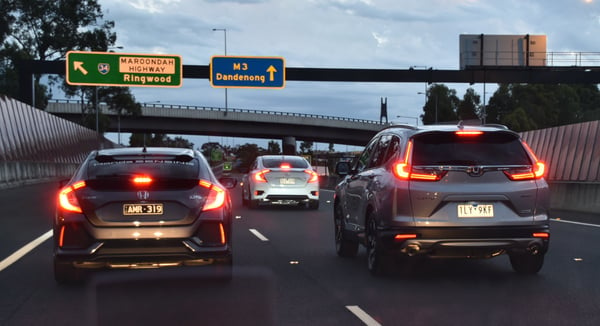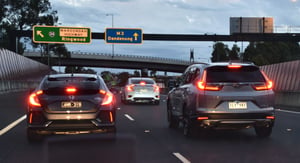Fewer Victorian motorists in 2018 want a fully self-driving car, but more want features like lane departure warning, lane keeping assistance and autonomous emergency braking.
Those are among a wide range of findings in the second annual Victorian Self-Driving Vehicle Survey, undertaken by EastLink in conjunction with ARRB – your National Transport Research Organisation.
More than 18,000 motorists were surveyed, making this the largest survey of its kind in the world.
EastLink’s Corporate Affairs and Marketing Manager Doug Spencer-Roy (pictured below with ARRB's Victoria's State Technical Leader Samantha Taylor) visited ARRB’s national headquarters to present the results direct to ARRB staff.

The key findings were:
Fewer motorists want a fully self-driving car, while more motorists want the latest driver assistance features
Compared to last year, fewer motorists want a fully self-driving car - the hype bubble has burst.
However, more motorists want (and more motorists use) the latest semi-automated driver assistance features like lane departure warning, lane keeping assistance, adaptive cruise control and automatic emergency braking. This is great news, as these features deliver many safety benefits and they are increasingly available in family cars. Widespread adoption of these features will make our roads safer.
These results support EastLink’s expectation that semi-automated driver assistance features will become commonplace before fully autonomous vehicles.
Eight in ten motorists would travel as a passenger in a fully self-driving car where the vehicle has a driver who is monitoring and able to take over control. However, the majority of motorists would not yet travel as a passenger in a fully self-driving car where the vehicle is completely driver-less and there are no driving controls.
A significant proportion of motorists expect that fully self-driving vehicles should be absolutely 100% safe with no possibility of ever being involved in a collision, even though this is an unrealistic expectation.
These are significant hurdles for the vehicle automation industry to overcome. EastLink believes that motorists must first become accustomed to, and gain trust in driver assistance technologies, using these technologies every day in their family car before they will accept fully self-driving cars.
Most motorists want a connected car
Compared to last year, demand for connected car features is largely unchanged. A clear majority of motorists still “definitely want” their next car to be connected to a data network for traffic warnings, road condition warnings and vehicle security features.
Desirability of hybrid power now rivals traditional petrol combustion engines
Meanwhile, the desirability of hybrid and fully electric cars has increased further, with hybrid power now rivalling traditional petrol combustion.
A per-kilometre road use charge concept is more popular than fuel tax
There are more motorists who think it’s unfair that electric vehicles avoid fuel tax compared to those who think it’s fair.
More motorists think fuel tax should be replaced by a per-kilometre road use charge compared to those who prefer the status quo. And the majority of motorists think any future road use charge should provide a discount for electric vehicles to encourage take-up.
Click here for the full EastLink media release on the 2018 Victorian Self-Driving Car Survey

